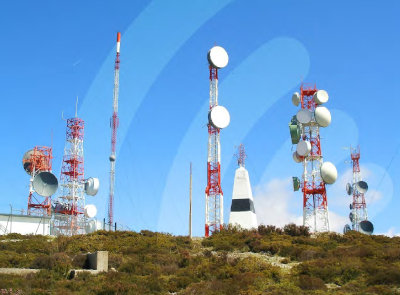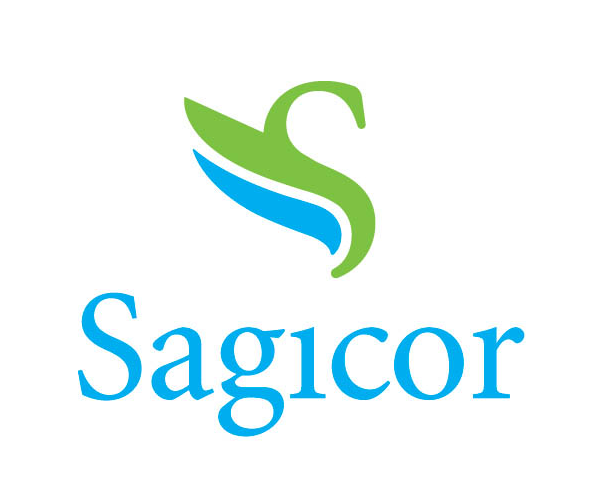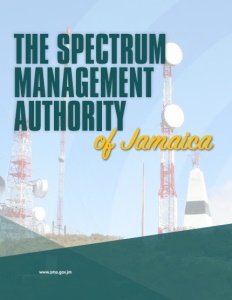The Spectrum Management Authority of Jamaica
Bridging the digital divide
Business View Caribbean reports on the Spectrum Management Authority of Jamaica, as part of our focus on best practices of government agencies.
The Spectrum Management Authority (SMA) is the national regulator for the radio frequency spectrum in Jamaica as authorized under the Telecommunications Act of 2000. The radio frequency (RF) spectrum is a valuable natural resource which facilitates the use of wireless technology for the development of the ICT (Information and Communications Technology) sector and is an enabler of businesses in other sectors of the economy.
 The radio spectrum is a subset of the electromagnetic waves lying between the frequencies from 9 kilohertz (kHz – thousands of cycles per second) to 30 gigahertz (GHz – billions of cycles per second). These support a wide range of business, personal, industrial, scientific, medical research, and cultural activities, both public and private. Communications are foremost among those activities and, together with other radio services, are increasingly important to the country’s economic and social development.
The radio spectrum is a subset of the electromagnetic waves lying between the frequencies from 9 kilohertz (kHz – thousands of cycles per second) to 30 gigahertz (GHz – billions of cycles per second). These support a wide range of business, personal, industrial, scientific, medical research, and cultural activities, both public and private. Communications are foremost among those activities and, together with other radio services, are increasingly important to the country’s economic and social development.
Efficient and effective spectrum management, therefore, is critical to spectrum allocation in a coordinated manner for the benefit of users at large without compromising national interests. Management of the spectrum is a combination of administrative and technical procedures with legal procedures necessary to ensure efficient operation of radio communication services.
Therefore, the objectives of the SMA are to:
- Ensure effective management of funding for operational and capital development expenses of the SMA;
- Provide reasonable revenues to the Government from the use of the spectrum;
- Develop and retain the key skills and competencies required to meet the changing needs of the industry locally and internationally;
- Promote an appropriate and effective policy, legislative, and regulatory framework;
- Develop and upgrade the SMA’s capital resources;
- Improve public awareness;
- Maintain operational efficiencies; and,
- Lobby the relevant government ministries and agencies such as Ministry of Finance, Ministry of Science, Energy and Technology, etc., to further the growth of the SMA and spectrum management practices.
The core functions of the SMA are:
- Planning the use of the spectrum and allocating frequencies in a way that will minimize interference;
- Monitoring users of the radio spectrum to ensure compliance and minimize interference;
- The collection of spectrum license fees which are remitted to the Government’s Consolidated Fund;
- Proactive monitoring of the spectrum to identify and eliminate cases of interference reported by spectrum users;
- Providing advice to the Government both with respect to policy and legal issues concerning the spectrum;
- To build and maintain robust relationships with the communities;
- To strengthen collaborative efforts between and among existing partners; and
- Licensing new users of the spectrum.
There are various categories of radio systems that are licensed by the Authority, namely:
- Terrestrial (land-based) radio systems – including fixed services (such as networks providing data transfer services) and mobile services (such as cellular services as well as 2-way radios);
- Satellite systems – for large earth stations and VSATs (very small aperture terminals);
- Maritime radio systems – these facilitate radio communication for ships, yachts, and boats; and,
- Aeronautical radio systems – which facilitate communication by airplanes and air-traffic controllers.
The Authority also acts in a certifying capacity in respect of the following licenses:
- Certificate of Competence in Radio Telephony/Global Maritime Distress and Safety System (GMDSS) – This certification authorizes the holder to carry out the radiotelephone service of any Ship Station;
- Radio Technician License – There are two (2) classes for this category of license: Class “A” and Class “B” Licenses. A license issued under Class “A” category authorizes the Licensee to install and maintain radio transmitting apparatus; and, the Class “B” category authorizes the Licensee to install and maintain radio transmitting apparatus with a radio frequency power not exceeding 1,000 watts; and
- Type Approval Certificate – This certification is issued to manufacturers of radio communication equipment after the Authority ensures that it conforms to appropriate standards and principles of product safety and will not interfere with other equipment or networks.
In facilitating the licensing process, the SMA conducts the following activities:
- Technical analysis – to determine whether the spectrum is available, that is, whether it was ever assigned to anyone;
- Monitoring of the frequency – to ensure that the frequency under review is free and clear, monitoring is conducted by the Band Planning Team; and
- Validation of the frequency – the team validates the frequency being requested to ensure the proposed service for use of the band is aligned with the allocation for Jamaica and by extension, aligned to the Radio Regulations governed by the International Telecommunications Union (ITU).
 In the last five years, the world has observed a transformation in the demand for telecommunication services. As the global communications market develops, Jamaica continues to trend in the same direction, although not at the same rate. However, there continues to be an increasing demand for the spectrum over the years, as the number of users increases and the variety of uses rises. As the demand for information, wherever, whenever and on-the-go, surges, and the proliferation of wireless devices escalates, so does the demand for the spectrum.
In the last five years, the world has observed a transformation in the demand for telecommunication services. As the global communications market develops, Jamaica continues to trend in the same direction, although not at the same rate. However, there continues to be an increasing demand for the spectrum over the years, as the number of users increases and the variety of uses rises. As the demand for information, wherever, whenever and on-the-go, surges, and the proliferation of wireless devices escalates, so does the demand for the spectrum.
Given these circumstances, there is an increasing interest and a need to respond to these imperatives and assess the organizational structure and operational efficiency of the SMA. This will take the form of a comprehensive organizational review which will specifically seek to transform the systems, operations, processes and structure of the SMA to:
- Respond to the current needs of the Jamaican telecommunications sector;
- Align the organization with the mandate of the Ministry of Science, Energy and Technology (MSET) as well as those of global trends in the telecommunications sector;
- Determine the existing strengths, weaknesses, threats and opportunities of the SMA’s operations;
- Evaluate the relevance of existing programs and projects;
- Review the current talent, knowledge-base and capacity of the SMA staff in light of changing national demands; and
- Review and evaluate the efficiency and effectiveness of systems, processes and structures that support the operations and resource management and utilization in all areas of the SMA.
The SMA completed the recent fiscal year with a staff complement of 37, which represents approximately 90 percent of the approved establishment of 41 posts. Significantly, in the course of the year, the SMA family welcomed on board Dr. Maria Myers-Hamilton who has assumed leadership of the SMA’s operations as the Managing Director.
The planned activities of the SMA for the 2018/19 FY will include:
- Pursuing the core functions of: licensing spectrum users, resolution of interference complaints according to established standards, monitoring and inspection to ensure the legitimate and efficient use of the spectrum, and collection of fees as targeted;
- Ensuring good corporate governance and statutory compliance within/by the Authority;
- Fulfillment of Local, Regional and International obligations; and,
- Performance Monitoring in order to achieve established targets and ensuring compliance with all statutory obligations.
The medium to long-term focus on spectrum management will primarily be on the following:
- Financial prudence and stability;
- Staff Recruitment, Retention and Training;
- Policy and Legislative Improvement in line with Jamaica’s Vision 2030 Plan;
- Capital Resource upgrade; and
- Public awareness.
Wireless broadband has been a key lever for digital inclusion in developed and developing countries. Penetration of wireless Internet and the economic and social benefits deriving from it have been increasing. Ensuring that the citizens of Jamaica have access to universal and affordable broadband will lead to accelerated development throughout the country.
Examples of the benefits of wireless broad-band include access to educational content (eLearning Initiative across Secondary and Primary schools), health services, and e-governance solutions. Broadband also affects how people connect to each other, how they engage in democratic processes, and how they read their daily news. These factors have generated an increase in data traffic and demand at an unprecedented rate. Efficient spectrum management is mandatory to meet these challenges and bridge the digital divide.
Check out our past features on The Spectrum Management Authority of Jamaica 2016 and The Spectrum Management Authority of Jamaica 2017.
AT A GLANCE
WHO: The Spectrum Management Authority of Jamaica
WHAT: The national regulator for the radio frequency spectrum in Jamaica
WHERE: Kingston, Jamaica
WEBSITE: www.sma.gov.jm





 This information will never be shared to third parties
This information will never be shared to third parties